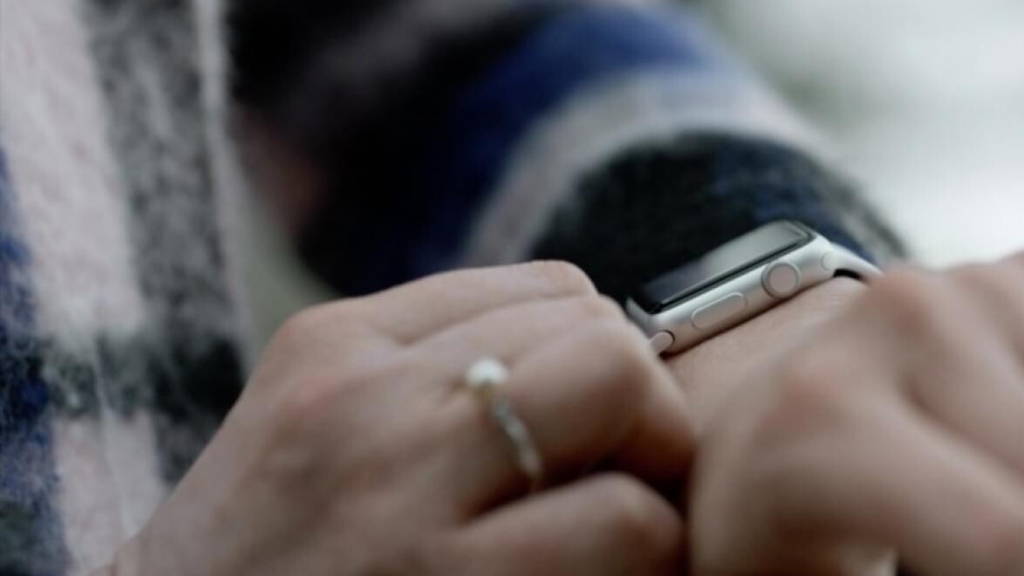To make this possible, Apple has hired a lot of healthcare experts in the past few years. The will help the company improve on its health record software, so it can better analyze and understand the implications of patient data, Bloomberg writes, quoting people familiar with the plans.
The Apple Watch (recently renewed with the Apple Series 2), already moving into personal health, wil become a more central part of Apples healthcare strategy as well. Series 2 has more sensors to pick up health related physical data and is waterproof so it can be used while swimming.
New Watch apps are being developed, for example traking sleep patterns or gauging fitness levels by measuring the time taken for the heart rate to fall from its peak to resting level. At the moment Apple has its own app that measures hear rate, but doesn’t interpret the data so advice can be given.
Apples acquisition of startup Gliimpse earlier underlines this strategy. The company builds software to pull electronic health records from different databases and in different formats, then store them in one place. This means easier access and also more data to combine and turn into personal advice – or give a better view of a patients overall condition.
Apple wil build upon Gliimpse: a platform, a set of application program interfaces, and a simple product that will bring what we believe will be a disruptive consumer health-care application to the U.S. for the first time, wrote Apple Health senior engineer Mohan Randhava on LinkedIn. He likened the product to Apple’s music business. That started with the iPod, but as people became accustomed to storing all their music files digitally, Apple built a lucrative music platform on top of the device.
It’s unclear how soon improvements to Apple’s HealthKit may be introduced. ResearchKit, another Apple software, lets research institutions and drugmakers conduct clinical trials using iPhone apps, and some of the trials hint at possible future applications for HealthKit. Each clinical study using ResearchKit brings Apple a step closer to embedding itself in hospitals, labs and doctors’ surgeries.
North Carolina’s Duke University developed a ResearchKit app using the iPhone’s front-facing camera to conduct facial recognition checks which try to screen for and diagnose autism. Apple is working hard with many of these large institutions to generate tools that are medically correct, to take data from sensors,” said Scott Jenkins, CEO of health data management company Certainty Health LLC. “They want to be the repository, the open collection space.”
Apple’s greatest hurdle for now: proving to medical professionals that data delivered from wearables through HealthKit and ResearchKit is reliable.
The Apple Watch (recently renewed with the Apple Series 2), already moving into personal health, wil become a more central part of Apples healthcare strategy as well. Series 2 has more sensors to pick up health related physical data and is waterproof so it can be used while swimming.
New Watch apps are being developed, for example traking sleep patterns or gauging fitness levels by measuring the time taken for the heart rate to fall from its peak to resting level. At the moment Apple has its own app that measures hear rate, but doesn’t interpret the data so advice can be given.
HealthKit improving on diagnoses
Ultimately Apple wants its medical technology team to turn HealthKit into a tool that improves diagnoses – Bloomberg again quotes the people familiar with the matter. The company thinks it can solve two problems this way. One is interoperability, the other analysis. By using healthKit not just to collect and transfer but also to interpret dats, this will allow for easy transfer from hospital to hospital across different databases. Offering analysing tools means making it quick and easy for physicians to extrapolate salient information from mountains of data.Apples acquisition of startup Gliimpse earlier underlines this strategy. The company builds software to pull electronic health records from different databases and in different formats, then store them in one place. This means easier access and also more data to combine and turn into personal advice – or give a better view of a patients overall condition.
Apple wil build upon Gliimpse: a platform, a set of application program interfaces, and a simple product that will bring what we believe will be a disruptive consumer health-care application to the U.S. for the first time, wrote Apple Health senior engineer Mohan Randhava on LinkedIn. He likened the product to Apple’s music business. That started with the iPod, but as people became accustomed to storing all their music files digitally, Apple built a lucrative music platform on top of the device.
Wedding people to Apple devices
Apple health software could become a revenue driver, too, by keeping people wedded to the company’s devices. If a patient’s health records, and related suggestions, are accessible through Apple’s system, it would be harder to trade in an iPhone for a smartphone running Google’s Android operating system, and its health-tracking software Google Fit.It’s unclear how soon improvements to Apple’s HealthKit may be introduced. ResearchKit, another Apple software, lets research institutions and drugmakers conduct clinical trials using iPhone apps, and some of the trials hint at possible future applications for HealthKit. Each clinical study using ResearchKit brings Apple a step closer to embedding itself in hospitals, labs and doctors’ surgeries.
North Carolina’s Duke University developed a ResearchKit app using the iPhone’s front-facing camera to conduct facial recognition checks which try to screen for and diagnose autism. Apple is working hard with many of these large institutions to generate tools that are medically correct, to take data from sensors,” said Scott Jenkins, CEO of health data management company Certainty Health LLC. “They want to be the repository, the open collection space.”
Apple’s greatest hurdle for now: proving to medical professionals that data delivered from wearables through HealthKit and ResearchKit is reliable.






